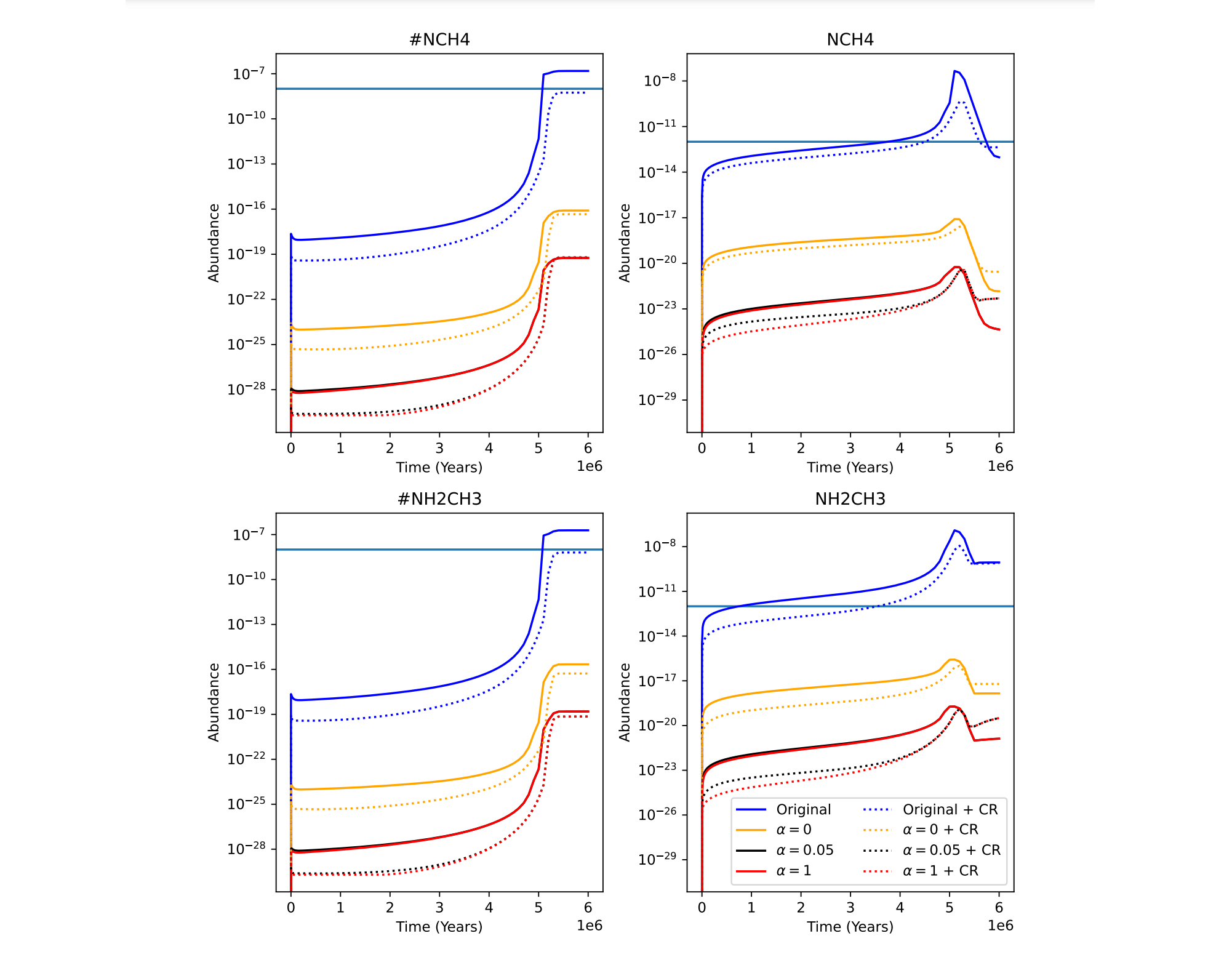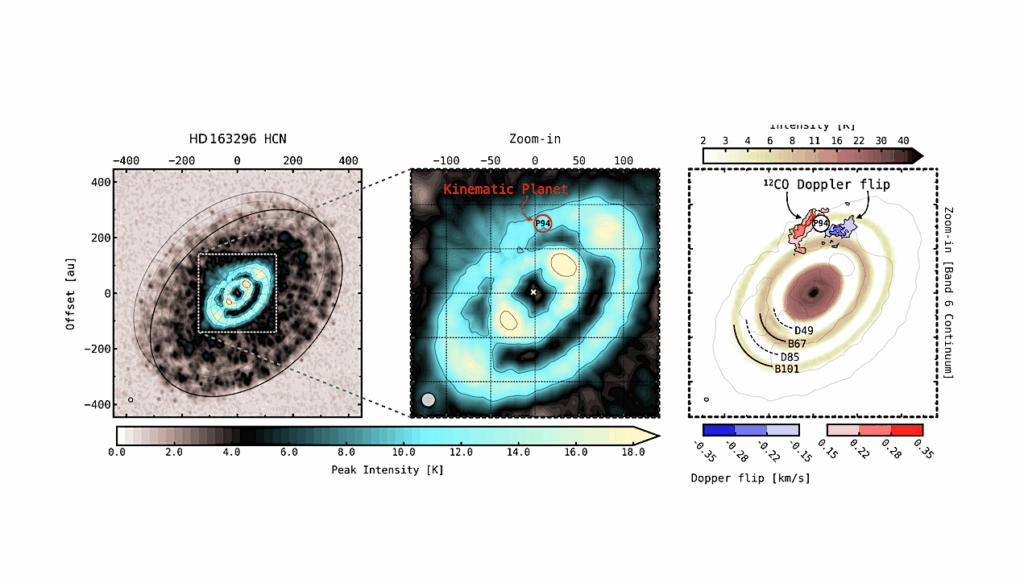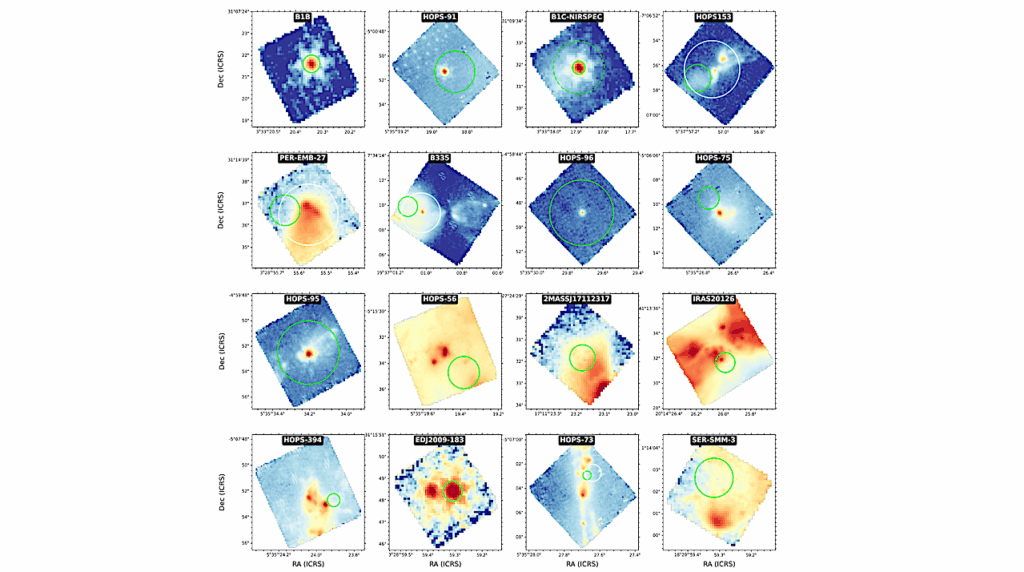Investigating The Impact of Reactions Of C And CH With Molecular Hydrogen On A Glycine Gas-grain Network

The impact of including the reactions of C and CH with molecular hydrogen in a gas-grain network is assessed via a sensitivity analysis.
To this end, we vary 3 parameters, namely, the efficiency for the reaction C + H2 -> CH2, and the cosmic ray ionisation rate, with the third parameter being the final density of the collapsing dark cloud. A grid of 12 models is run to investigate the effect of all parameters on the final molecular abundances of the chemical network.
We find that including reactions with molecular hydrogen alters the hydrogen economy of the network; since some species are hydrogenated by molecular hydrogen, atomic hydrogen is freed up. The abundances of simple molecules produced from hydrogenation, such as CH4, CH3OH and NH3, increase, and at the same time, more complex species such as glycine and its precursors see a significant decrease in their final abundances.
We find that the precursors of glycine are being preferentially hydrogenated, and therefore glycine itself is produced less efficiently.
Johannes Heyl, Thanja Lamberts, Serena Viti, Jonathan Holdship
Comments: 11 pages, 3 figures, accepted for publication in MNRAS
Subjects: Astrophysics of Galaxies (astro-ph.GA); Chemical Physics (physics.chem-ph)
Cite as: arXiv:2301.04324 [astro-ph.GA] (or arXiv:2301.04324v1 [astro-ph.GA] for this version)
Submission history
From: Johannes Heyl
[v1] Wed, 11 Jan 2023 06:21:52 UTC (760 KB)
https://arxiv.org/abs/2301.04324
Astrochemistry, Astrobiology








